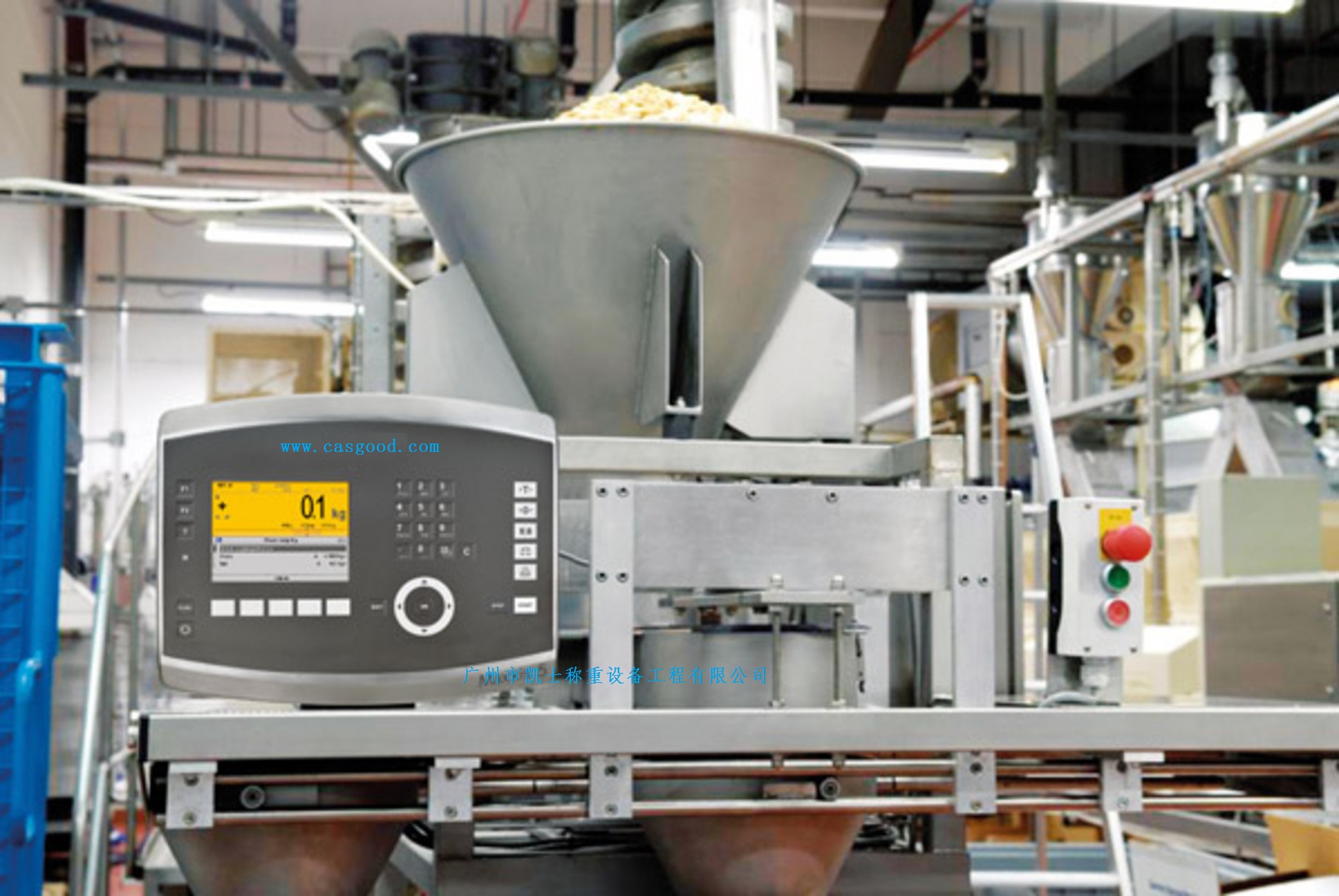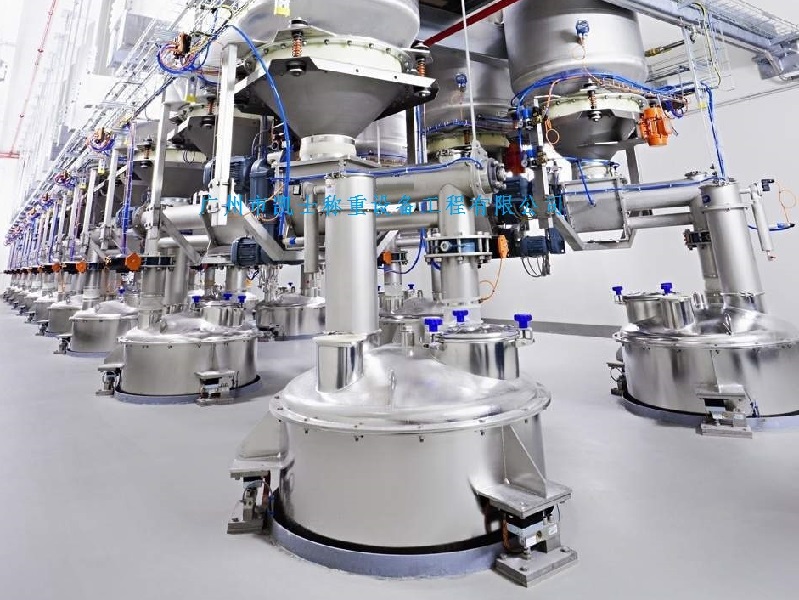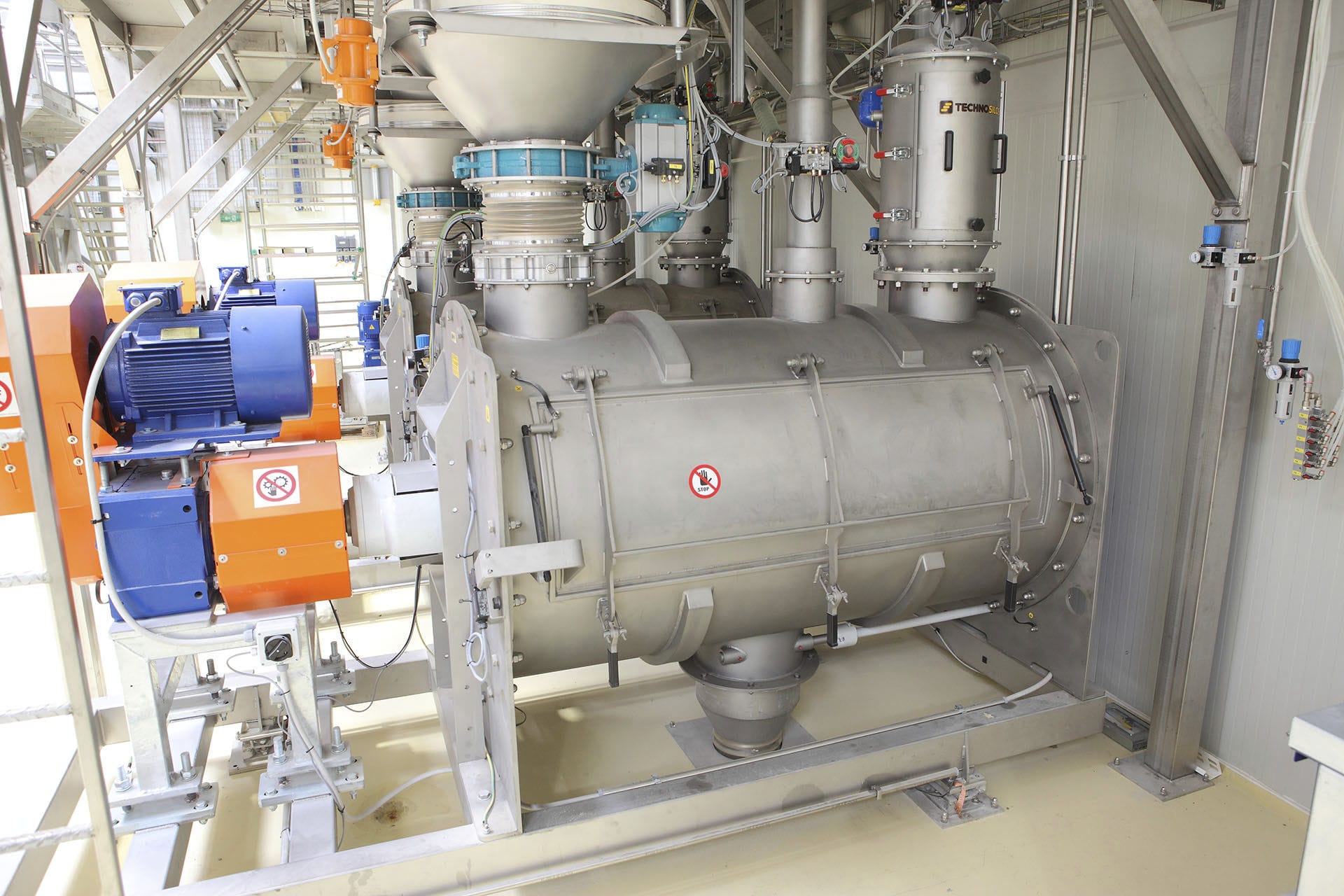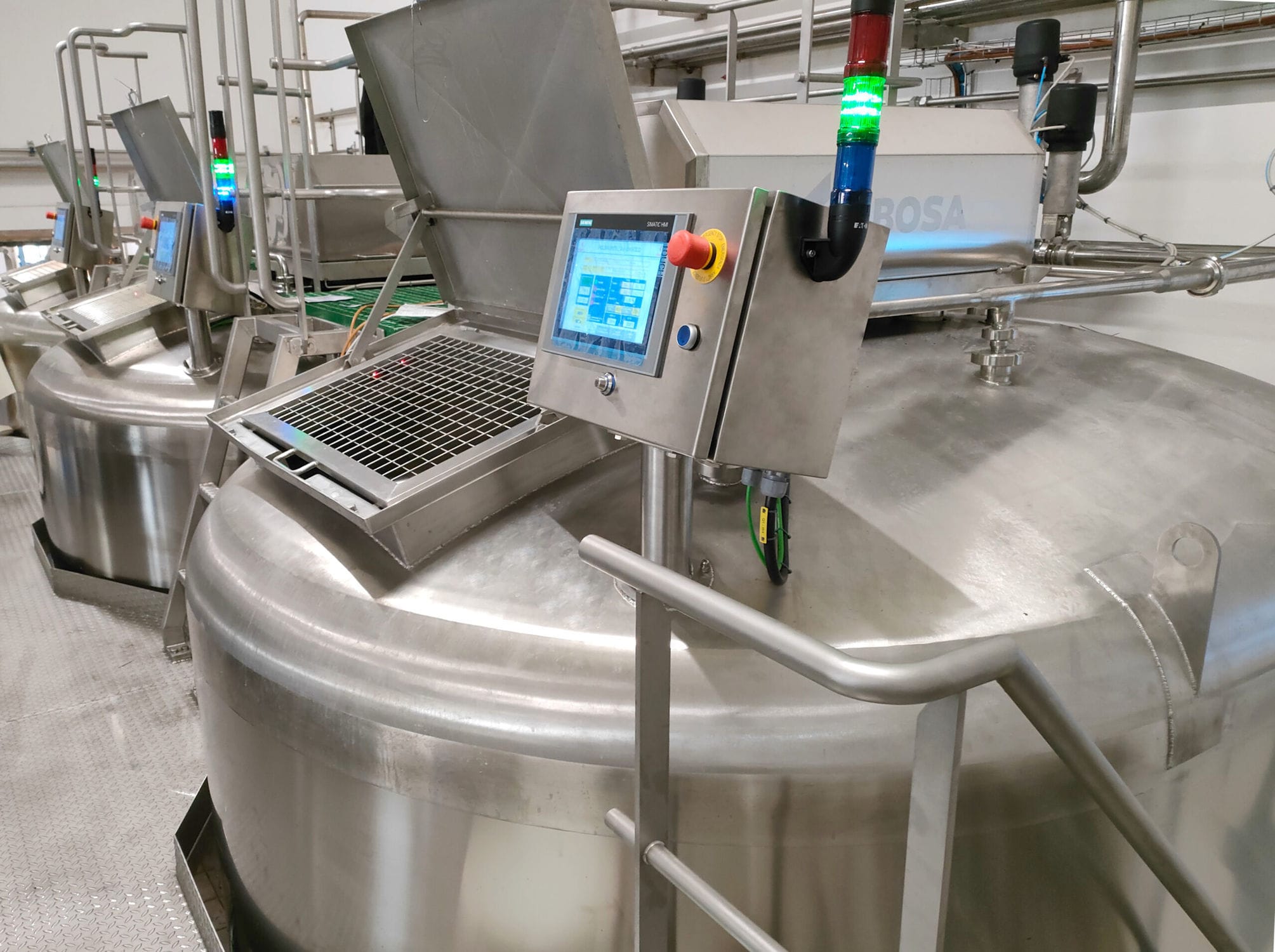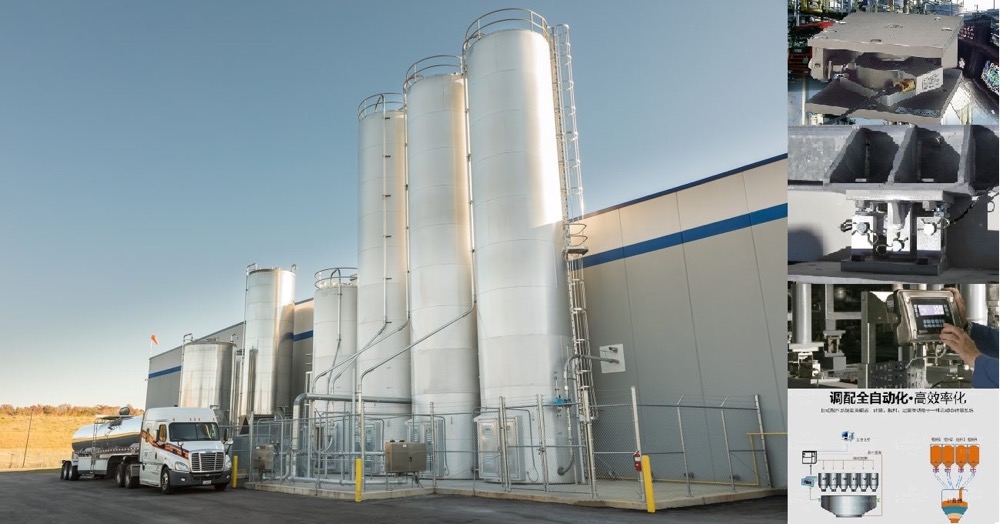

 2020.01.19
2020.01.19Summary:The batching system comprehensively applies force control configuration software, Delphi visual programming software, ORACLE relational database and serial port networking equipment. This is a flexible application of currently mature technologies.In the current situation of rapid development of the IT industry, the successful combination of various technical interfaces is also a kind of technological innovation.
1 The significance and introduction of feeding system
There are 9 blast furnaces in the ironmaking plant, including 6 350 blast furnaces and 3 1750 blast furnaces, and the materials of blast furnace are: coke (dry quenched coke, wet coke), pulverized coal, sintered ore, landed ore, Brazilian ore, Australian ore, pelletized ore and other small amount of ore used, and there are more than 140 hopper scales and 18 coal injection scales under the slot of the blast furnace, and the under-slot scales belong to the static scales, which are accurate in measurement and suitable for precise batching. For a long time, the data used in the costing and production statistics before ironmaking are based on the theoretical quantity of furnace, and there are weighing data of each batch of materials in the feeding system of each blast furnace, but there is no reasonable storage, no corresponding material name matching, and a large amount of data resources are wasted. The original man-furnace material settlement and assessment system of the ironmaking plant is to calculate the output of the pre-iron production plant with the gross man-furnace material, i.e., the belt scale is used as the measurement and delivery point of self-produced sinter ore, pellet ore and coke, and there are many external influences around the belt scale, which results in unstable measurement and poor effectiveness, which is also a recognized detection problem in the iron and steel industry, and multiple blast furnaces share the same belt scale, so it is difficult to subdivide the actual man-furnace volume from the belt scale. Moreover, many blast furnaces share the same belt scale, which makes it difficult to break down the actual quantity of each blast furnace from the belt scale, which is not conducive to the costing of ironmaking and the statistics of economic and technical indicators.
The system adopts on-line accurate data collection of furnace charge, and the real-time metering data provided by the charging material guides the ironmaking process to pay attention to the effective quantity of furnace charge and accurately calculate the ironmaking cost; it promotes the overall improvement of the metering management level of the weighing scale under the ironmaking tank, and is applicable to the management idea of accurate cost assessment of a single blast furnace, so as to promote the continuous improvement of the management level of the production of the blast furnace.
2 Solution of batching system
To realize precise data acquisition and monitoring system, it is necessary to create a data processing system that can communicate with PLC weighing part for real-time acquisition, data storage and management, and provide complete details of blast furnace production feeding information, so as to make it become the data source of the net person furnace material settlement system, and become the technical support for improving the production management and work efficiency.
2.1 Accurate data collection program
2.1.1 According to the "real-time collection of each batch of material each hopper weighing the net weight" principle of implementation
This collection principle brings a lot of benefits, the data collected from the feeding batch is clear and transparent, without any data processing, real and credible, convenient for online supervision and data sharing in the iron front area, and there is a rule to follow in dealing with abnormal data.
2.1.2 Synchronization with automatic charging system
In the charging system of blast furnace, each under-tank scale prepares materials with the set value as the benchmark, and the preparation program automatically compensates according to the set value of the scale in order to balance the value of each batch of charging material lot. After preparing the material, the full value is obtained, i.e. gross weight: when discharging the material, the bottom of the scale after emptying the material from the trough weigher is taken as the tare weight, i.e. empty value; full value - empty value - net weight, i.e. the net weight value of the material of the current batch of furnace materials.
Small blast furnace slot under the scale discharge, under the gate there are material car receiving material. To the material car really start, up 2 ~ 3s, began to provide the configuration software for each hopper gate switching acquisition signal; switching signal has been maintained until the material car in the top of the furnace discharge back to the original position, about 30 ~ 40s. for the reading of the net weight of the value of the collection of sufficient time. This reflects the timing of the acquisition and the validity of the data.
There is no hopper in the big blast furnace system, so it directly collects the net weight value of each electronic scale. The weighing value is the full value after 15s delay of the full signal, which ensures the steady state value; the weighing value is the empty value after 5s delay of the empty material and the gate shutting in place; the net weight value of each electronic scale is calculated; when the batch of material is uploaded onto the main belt, the uploading signal is sent to the configuration software, and the database stores the actual value of the batch and the number of batches of the material. The collected value corresponds to the batch value, which reflects the authenticity of the data.
2.2 B/S network architecture and network transmission
Comprehensively utilizing the existing office network resources of the head office, the PLC weighing data in the industrial control network is transmitted to the office network by configuring the device networking function of the serial port server. Extend the network access point to the front of RTU serial port of each furnace PLC, so that each equipment collection node and collection server form a unified star-shaped collection network system. The collection system under the tank is divided into four levels from the overall architecture: equipment layer, collection layer, monitoring layer and management layer, and is built into a highly integrated and distributed office network and collection data processing system. Among them:
1) The equipment layer is based on the automatic feeding system of blast furnace, and the Concept2.6 development tool is used to modify and increase the corresponding functions: the net weight data of each batch of material is stored in real-time in the PLC register address; the address is cleared and the net weight of the next batch of material is stored, and the storage period is set to be before the entry of the next batch of data.
2) The acquisition layer applies the performance of MOXA serial server, automatically converts communication protocols, converts hardware communication modes, effectively avoids the "15-meter distance limitation of serial communication", realizes remote communication and acquisition, and realizes the function of centralized transmission from multiple distributed acquisition points to the server.
3) The monitoring layer is based on the development and application of force control configuration software to complete the real-time collection and online monitoring of the feeding process, which is the "nerve center" of the collection system and stores the collected data in the database. It communicates with the serial port server of each collection point; internally, it centralizes the parameter settings of each communication device, completes the database configuration and writes the script function statements; and upwardly, it connects with the management to provide the interface of production management and monitoring. In a word, it plays the role of carrying on the top and starting the bottom, and is an important part of this collection system.
4) The management takes the ORACLE database installed on the collection server as the data source. This new type of management and control integration combination of real-time weighing data in the industrial control network, through the protocol conversion → remote reading (by the second cycle) a collection and storage → calculation and summary of an automatic uploading, completed the production data in the industrial control network of multi-level, step-by-step data processing process, the realization of the industrial control network to the backbone of the network of counting the quality of the system to transmit data to the function, to protect the industrial control network, data security, equipment security. It applies the feature of immediate networking of serial server equipment, which is the key equipment for eliminating the phenomenon of "islands" of informationization. Fully realized the communication between production online data and management information chain. Serial server testing, force control configuration collection, scripting, ORACLE database server creation, using Delphi to write variable material management program, foreman training, and quality system interface development, to open up all the technical routes, for the first time, to establish the system technology development and production management combined with the collection and data processing model.
5) Change material management of human furnace charge. Furnace charge has a complex structure, which is divided into four categories: sinter, pellet, coke and miscellaneous ore, including purchased, self-produced, dry coke and wet coke, which are raw materials with different sources and characteristics. In the ironmaking feeding process, in which the electronic weighing of the material, when to change the material, real-time feeding data and material name matching and other details of variable material management, only the blast furnace foreman's position is the most clear. For this reason, we boldly designed the program function, post function and working order of material change management, in order to focus on solving the problem of matching the real-time human furnace material with the actual material name under the slot, and optimally solved the "bottleneck" problem that has long been restricting this project. The server uploads data regularly for the quality control system through stored procedures. Internally, it provides material change management service for the foreman position to realize the matching between feeding data and material name; externally, it is seamlessly connected with the quality control system to meet the management, statistics and query of production data.
3 Conclusion
The system fully achieves the design goal of integrated management and control: following the collection principle of "real-time collection of the actual net weight of each batch of material from each electronic weighing of each blast furnace", the collected feeding measurement data are transparent and clear, with good real-time performance, which is convenient for the on-line supervision of each process before iron; according to the set workflow, the blast furnace foreman manually completes the matching of the actual feeding material with the material name of the real-time collection data; the system automatically matches the material name with the real-time collection data. According to the set workflow, the blast furnace foreman manually completes the matching between the actual feeding material and the material name of the real-time collected data; the system automatically and quickly stores the online collected weighing records in a safe and complete manner, and the data processing results are correct; the system calculates and summarizes the data according to the blast furnace according to the classification of the material on a daily basis, and the data are automatically transferred to the quality counting system in a positive point. The operation of the system has changed the way of measurement and settlement in the pre-iron area, changed the way of technical management and data statistics within the ironmaking plant, provided powerful data support for the blast furnace net manning charge settlement system, and satisfied the demand for accurate measurement data of various management and production technology departments.


















